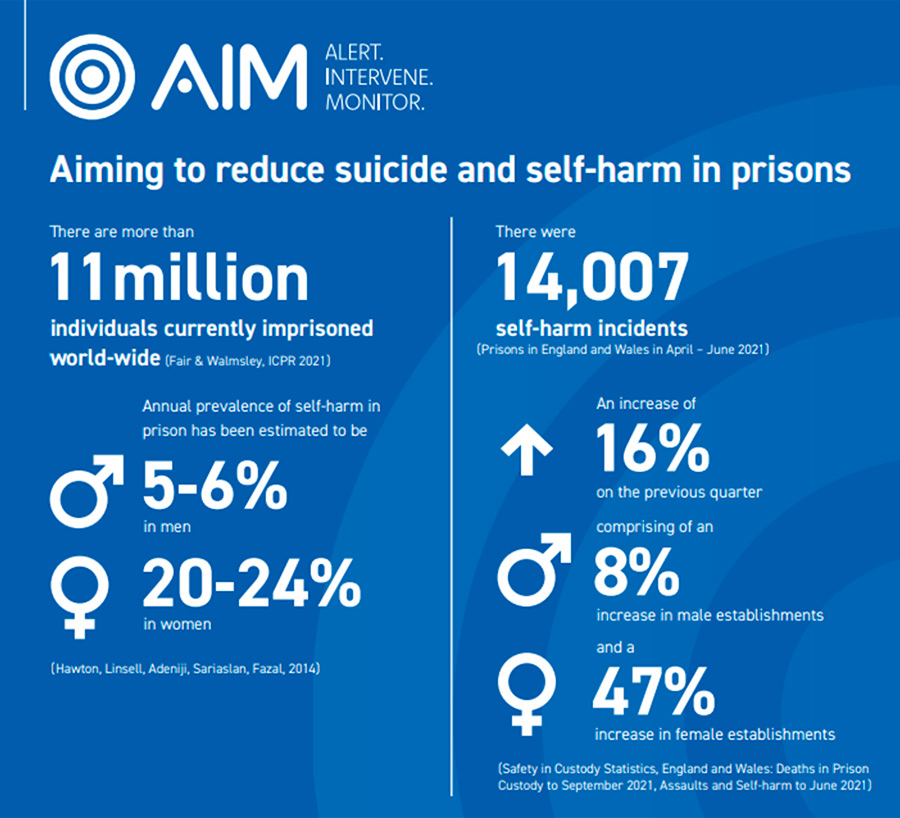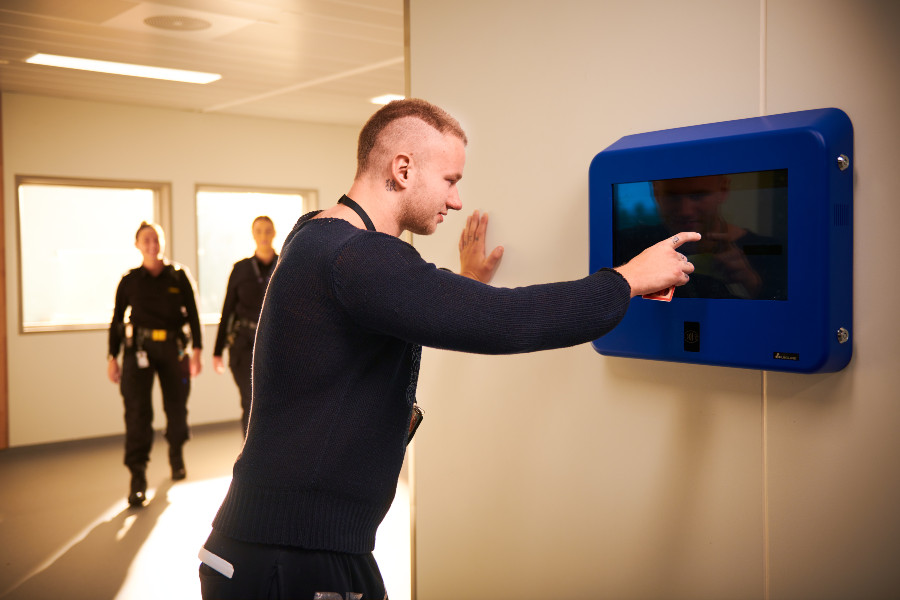Article
Francis Toye
With an alarming 11 million individuals currently incarcerated worldwide, prioritising the treatment of mental health risks within prison systems is of utmost importance (Fair & Walmsley, 2021).
The risk of suicide in prison is higher than in the general population (Fazel, Ramesh, & Hawton, 2017), and the levels of self-harm and mental health problems are disproportionately high among people in custody (Hawton K., 2014).
An innovative “Alert, Intervene, Monitor” (AIM) application has risen to this challenge. AIM represents a significant stride in transforming prison environments by analysing prisoner interactions and granting operational staff and governors valuable insights to detect vulnerabilities and risks among prisoners, particularly pertaining to suicide and self-harm.
A Revolutionary Tool for Prison Safety Built on Extensive User Research
Furthermore, the application’s design and features were informed by a comprehensive meta-analysis published in The Lancet (Favril, Yu, Hawton, & Fazel, 2020), consolidating decades of research on prison suicide and self-harm.

Enhancing data analysis and empowering prison administrators

Conclusion
By empowering prisoners with increased autonomy, fostering family connections, and addressing digital exclusion, the app plays a crucial role in supporting rehabilitation and desistance. AIM’s data-driven approach equips prison staff and governors with the necessary tools to intervene effectively, creating safer and more supportive prison environments for all.
References
Fair, H., & Walmsley, R. (2021). World Prison Population List (WPPL). London: Institute for Crime & Justice Policy Research (ICPR), at Birkbeck, University of London.
Favril, L., Yu, R., Hawton, K., & Fazel, S. (2020). Risk factors for self-harm in prison: a systematic review and meta-analysis. Lancet Psychiatry.
Fazel, S., Ramesh, T., & Hawton, K. (2017). Suicide in prisons: an international study of prevalence and contributory factors. Lancet Psychiatry.
Hawton K., L. L. (2014). Self-harm in prisons in England and Wales: an epidemiological study of prevalence, risk factors, clustering, and subsequent suicide. Lancet.

Francis Toye is the Founder and CEO of Unilink, an internationally recognised company founded in 1994 that specialises in providing cutting-edge integrated solutions for Corrections. With a highly skilled team of over two hundred professionals, and working closely with correctional experts and global authorities, the company has developed a comprehensive range of solutions to address the specific needs of the industry. Its rich portfolio of proven solutions underpins digital transformation in prison and probation services across the UK, Europe, Australia, and New Zealand. The company constantly strives to innovate offender management in prison and in the community. Unilink is a multi-award-winning company, including the King’s Award for Enterprise in International Trade in 2023.



